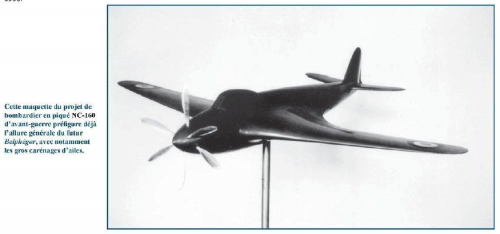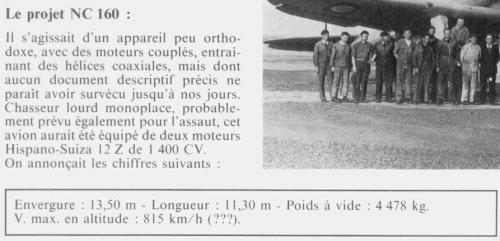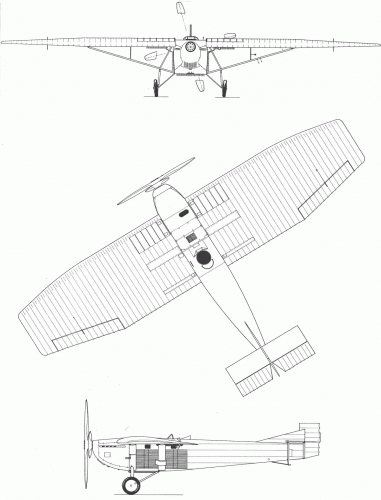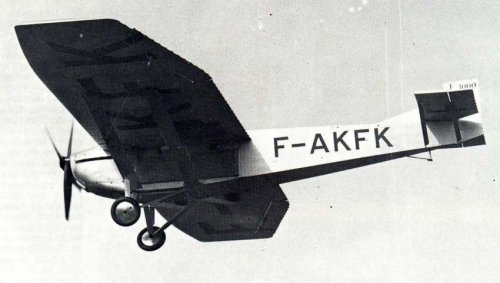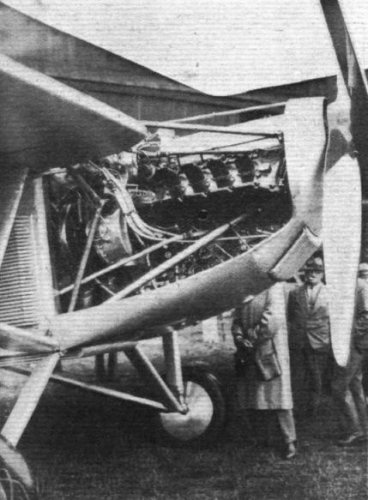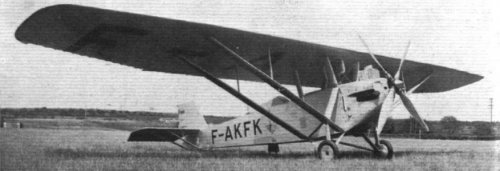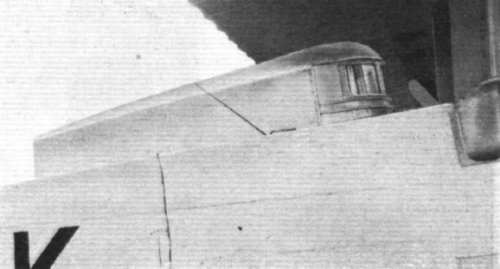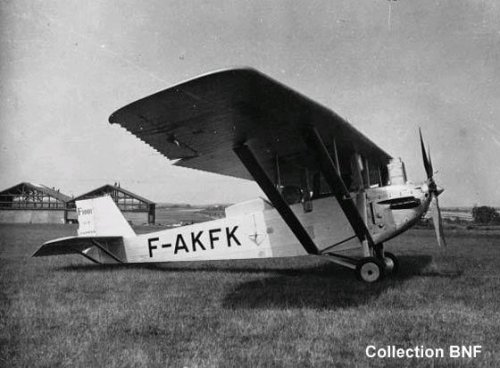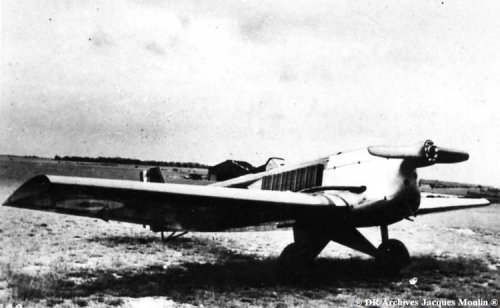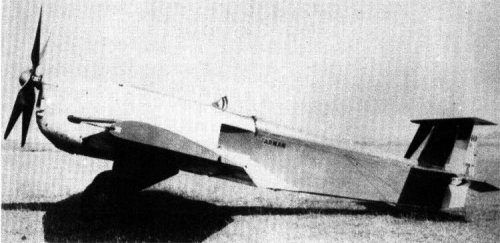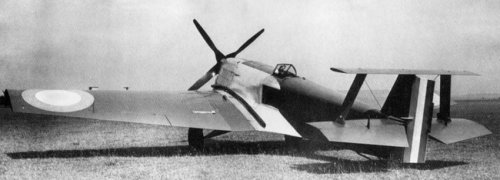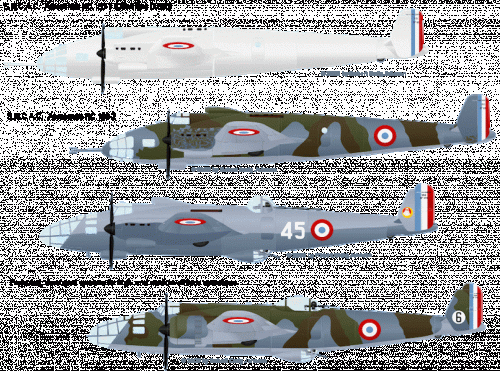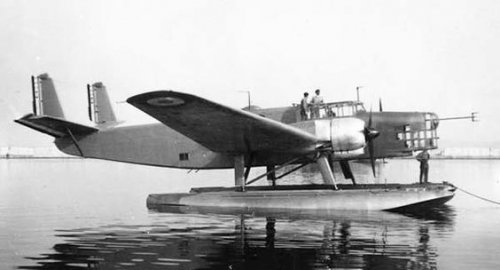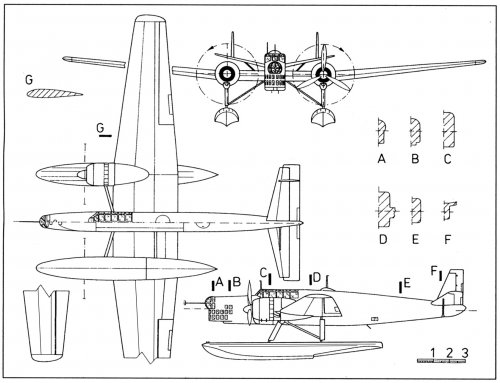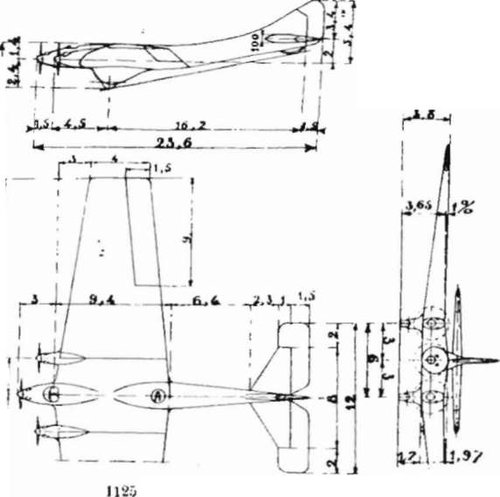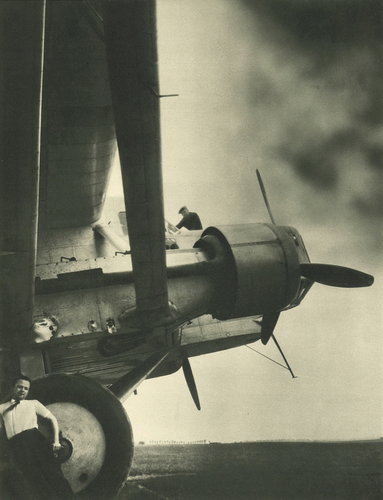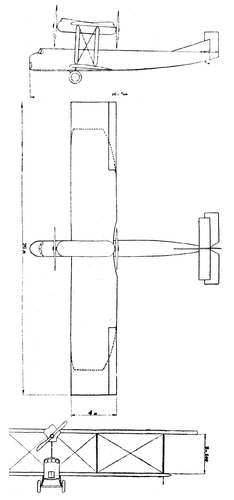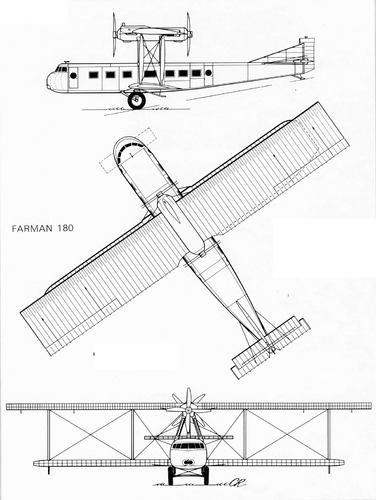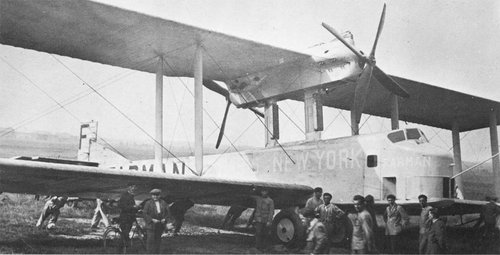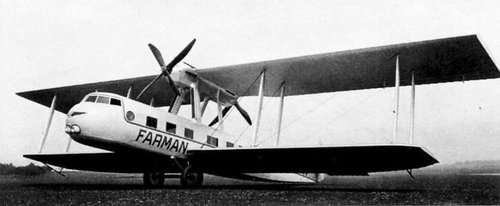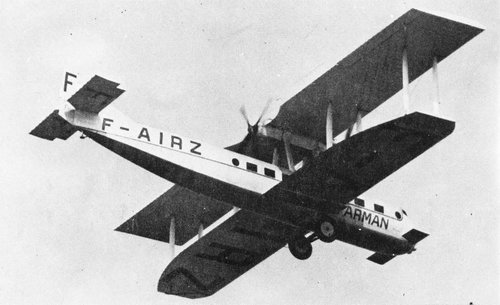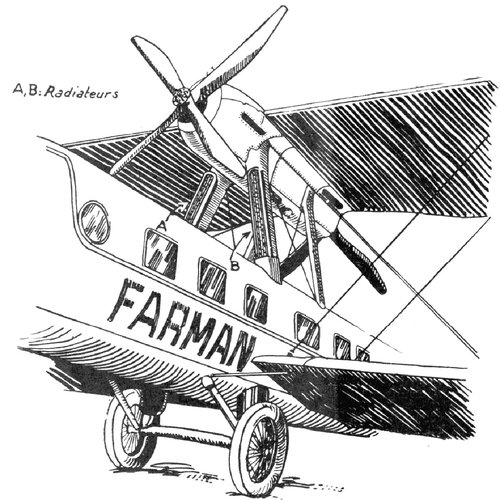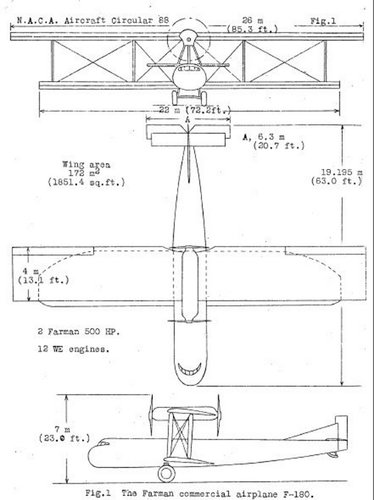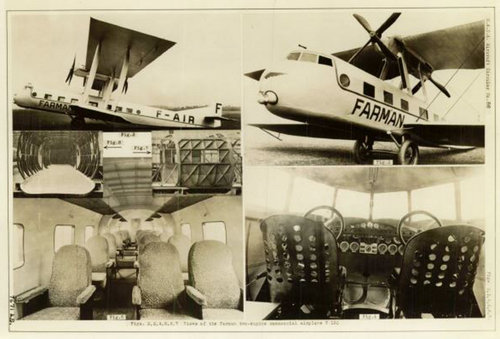You are using an out of date browser. It may not display this or other websites correctly.
You should upgrade or use an alternative browser.
You should upgrade or use an alternative browser.
Farman and SNCAC Projects
- Thread starter hesham
- Start date
hesham said:Hi,
here is a NC.160 heavy combat and dive bomber low-wing monoplane Project Model.
Avions 207
Very interesting shape. Anything on proposed power plant, size, and/or weight???
Deltafan
ACCESS: Top Secret
- Joined
- 8 May 2006
- Messages
- 1,697
- Reaction score
- 2,317
For the power plant, maybe it was a device like the one for the NC.110 heavy bomber project (2 x 2 Hispano-Suiza 12Y with contrarotating propellers), but with 2 Hispano-Suiza 12Z.Piper106 said:(...) Anything on proposed power plant, size, and/or weight???
http://forum.aviation-ancienne.fr/t8080-projet-de-bombardier-strategique-le-nc-110
- Joined
- 30 November 2007
- Messages
- 1,126
- Reaction score
- 592
http://www.secretprojects.co.uk/forum/index.php/topic,5309.msg130204.html#msg130204
- Joined
- 26 May 2006
- Messages
- 34,895
- Reaction score
- 15,759
Hi,
the Farman F.210 was a twin engined float torpedo bomber monoplane Project,intended
to compete in 1930 contest with those tenders;
the Farman F.210 was a twin engined float torpedo bomber monoplane Project,intended
to compete in 1930 contest with those tenders;
-"TOR.2/3" two/three seat torpedo bomber seaplane; CAMS-60,Denhaut design
blackkite
Don't laugh, don't cry, don't even curse, but.....
- Joined
- 31 May 2007
- Messages
- 8,819
- Reaction score
- 7,716
Hi! Farman F.1000. With skin cooler?
https://en.wikipedia.org/wiki/Farman_F.1000
"The Farman F.1000 was a 1930s French monoplane designed by Farman to break the world altitude record."
"The F.1000 was a high-wing strut-braced monoplane with a large wing area. It had a conventional fixed landing gear and was powered by a 350 hp (261 kW) Farman 8Vi engine. The aircraft first flew on the 25 June 1932, piloted by Lucien Coupet.
The pilot had a restricted view on landing and take-off and the aircraft was modified with a raised seat mounted on top of the aircraft's fuselage leaving just the pilot's legs in the original cockpit. For landing the pilot opened the pressurized hatch above his head, moved the sliding rudder bar to the up position, strapped into the fuselage seat and attached a removable stick to control the aircraft. During the rest of the flight the pilot had a pressurised cabin with just two small windows on each side.
The F.1000 only reached 5000 m (16,405 ft) during tests, so Farman redesigned the aircraft as the Farman F.1001 which had a parasol wing and an improved view for the pilot.Powered by a Farman Wirs engine it first flew in June 1935.[1] On 5 August 1935 the aircraft, with pilot Marcel Cagnot, took off on what would be a fatal attempt at the world record. The barograph recovered showed the aircraft had reached 10,000 m (32,810 ft) but a failure of one of the cupola windows had led to a rapid decompression and death of the pilot.
A more developed version appeared later as the Farman F.1002, although it made several flights over 8,000 m (26,425 ft) little is known about the aircraft."
"General characteristics
Crew: 1
Length: 11.50 m (37 ft 8¾ in)
Wingspan: 18.5 m (60 ft 8¼ in)
Height: 3.50 m (11 ft 5¾ in)
Wing area: 72.50 m2 (780.41 ft2)
Gross weight: 2,535 kg (5,589 lb)
Powerplant: 1 × Farman 8Vi inverted V-8 water-cooled piston engine with turbosupercharger??, 261 kW (350 hp)
Performance
Maximum speed: 289 km/h (179 mph)
Service ceiling: (estimated) 20,000 m (65,615 ft)"
"F.1000 Original 350 hp (260 kW) Farman 8Vi powered aircraft, one built.
F.1001 Improved version, powered by a 540 hp (400 kW) Farman 12 Wiars, one built. First flown in May 1935, on 4 August 1935, the bursting of a window at 10,400 m (34,100 ft) led to the death of the pilot.
F.1002 Further improved variant, powered by a 540 hp (400 kW) Farman 12 Wiars, first flown in July 1936.
http://www.airwar.ru/enc/law1/f1000.html
http://aviadejavu.ru/Site/Crafts/Craft31654.htm
https://en.wikipedia.org/wiki/Farman_F.1000
"The Farman F.1000 was a 1930s French monoplane designed by Farman to break the world altitude record."
"The F.1000 was a high-wing strut-braced monoplane with a large wing area. It had a conventional fixed landing gear and was powered by a 350 hp (261 kW) Farman 8Vi engine. The aircraft first flew on the 25 June 1932, piloted by Lucien Coupet.
The pilot had a restricted view on landing and take-off and the aircraft was modified with a raised seat mounted on top of the aircraft's fuselage leaving just the pilot's legs in the original cockpit. For landing the pilot opened the pressurized hatch above his head, moved the sliding rudder bar to the up position, strapped into the fuselage seat and attached a removable stick to control the aircraft. During the rest of the flight the pilot had a pressurised cabin with just two small windows on each side.
The F.1000 only reached 5000 m (16,405 ft) during tests, so Farman redesigned the aircraft as the Farman F.1001 which had a parasol wing and an improved view for the pilot.Powered by a Farman Wirs engine it first flew in June 1935.[1] On 5 August 1935 the aircraft, with pilot Marcel Cagnot, took off on what would be a fatal attempt at the world record. The barograph recovered showed the aircraft had reached 10,000 m (32,810 ft) but a failure of one of the cupola windows had led to a rapid decompression and death of the pilot.
A more developed version appeared later as the Farman F.1002, although it made several flights over 8,000 m (26,425 ft) little is known about the aircraft."
"General characteristics
Crew: 1
Length: 11.50 m (37 ft 8¾ in)
Wingspan: 18.5 m (60 ft 8¼ in)
Height: 3.50 m (11 ft 5¾ in)
Wing area: 72.50 m2 (780.41 ft2)
Gross weight: 2,535 kg (5,589 lb)
Powerplant: 1 × Farman 8Vi inverted V-8 water-cooled piston engine with turbosupercharger??, 261 kW (350 hp)
Performance
Maximum speed: 289 km/h (179 mph)
Service ceiling: (estimated) 20,000 m (65,615 ft)"
"F.1000 Original 350 hp (260 kW) Farman 8Vi powered aircraft, one built.
F.1001 Improved version, powered by a 540 hp (400 kW) Farman 12 Wiars, one built. First flown in May 1935, on 4 August 1935, the bursting of a window at 10,400 m (34,100 ft) led to the death of the pilot.
F.1002 Further improved variant, powered by a 540 hp (400 kW) Farman 12 Wiars, first flown in July 1936.
http://www.airwar.ru/enc/law1/f1000.html
http://aviadejavu.ru/Site/Crafts/Craft31654.htm
Attachments
blackkite
Don't laugh, don't cry, don't even curse, but.....
- Joined
- 31 May 2007
- Messages
- 8,819
- Reaction score
- 7,716
F.1001 and F.1002.
https://www.aviafrance.com/farman-f-1001-aviation-france-9222.htm
https://en.wikipedia.org/wiki/Farman_F.1000
"Farman F.1001 which had a parasol wing and an improved view for the pilot."
"A more developed version appeared later as the Farman F.1002, although it made several flights over 8,000 m (26,425 ft) little is known about the aircraft."
https://www.aviafrance.com/farman-f-1001-aviation-france-9222.htm
https://en.wikipedia.org/wiki/Farman_F.1000
"Farman F.1001 which had a parasol wing and an improved view for the pilot."
"A more developed version appeared later as the Farman F.1002, although it made several flights over 8,000 m (26,425 ft) little is known about the aircraft."
Attachments
Deltafan
ACCESS: Top Secret
- Joined
- 8 May 2006
- Messages
- 1,697
- Reaction score
- 2,317
blackkite said:https://www.hydroretro.net/etudegh/moteursfarman.pdf
What is written about F.1000, F.1001 and F.1002? ???
Nothing very new.
They were planes to study stratospheric flights.
-F.1000, a secret derivative of the F.190. The 8 Vi engine, supercharger with two speeds, was not enough powerful. It could only reach 5000 m. After that, the study of a three speeds supercharger failed. It's why Farman needed to improve the F.1000 with a 12 Wiars engine, with two speeds supercharger too, and a new wing with 3 m more wingspan (the F.1001).
-F.1001, it reached more than 10 000 m, but crashed during this flight because of the bursting of the window.
-F.1002, a secret plane too. The cabin is strengthened and equipped with a parachute. The pilot flew with an inhaler and a dog (for quick reaction in case of depressurization). It could only reach 8000 m. After an explosion of the engine (April 1937), the pilot must landing and this was the end of the flights.
Deltafan
ACCESS: Top Secret
- Joined
- 8 May 2006
- Messages
- 1,697
- Reaction score
- 2,317
In the book Les avions Farman (Liron, Docavia/Larivière N°21, page) there are three pages on the F.1000, 1001 and 1002.
They confirm that there was no turbocharger in the three planes (only superchargers with two speeds).
The engines of the 1001 and 1002 were the 12 Wiars.
In the book, it's said too that the 1002 had one metre more length than the 1001.
As the 1002 had the same engine and was heavier than the 1001 (strengthened cabin, parachute, length, dog, inhaler) it seems logical that it could not reach the same altitude.
They confirm that there was no turbocharger in the three planes (only superchargers with two speeds).
The engines of the 1001 and 1002 were the 12 Wiars.
In the book, it's said too that the 1002 had one metre more length than the 1001.
As the 1002 had the same engine and was heavier than the 1001 (strengthened cabin, parachute, length, dog, inhaler) it seems logical that it could not reach the same altitude.
blackkite
Don't laugh, don't cry, don't even curse, but.....
- Joined
- 31 May 2007
- Messages
- 8,819
- Reaction score
- 7,716
Hi! Farman F.1010.
https://en.wikipedia.org/wiki/Farman_F.1010
"The Farman F.1010 was a small, low-wing, single-seat monoplane ordered by the French government in 1931 to test in flight a large-calibre cannon. This was mounted between the cylinder banks of an inverted V-8 engine."
"The F.1010 was first flown by Lucien Coupet in August 1932, then by other Farman test-pilots Burtin and André Salel. It was tested by a military test pilot, lieutenant Francois Polart in tests beginning that December at Villacoublay. He found it heavy (the cannon accounted for 10% of the total loaded weight) and unmanoeuvrable. Significant modifications were made during these test, which extended into 1933. Manoeuvrability was addressed by the addition of a second horizontal tail surface at the top of the fin, braced to the original one below with wide chord struts. The lateral radiators were moved to the wings. The original two-bladed propeller was replaced by a four bladed, metal one. Polart also reported strong vibrations at low speeds and a tendency to drop the nose when the engine was at full power. The F.1010 was taken to Cazaux for gun testing; the aircraft probably returned to be abandoned at Villacoublay at the end of these firing tests."
"General characteristics
Crew: 1
Length: 8.24 m (27 ft 0 in)
Wingspan: 11.50 m (37 ft 9 in)
Height: 2.60 m (8 ft 6 in)
Wing area: 26.25 m2 (282.6 sq ft)
Gross weight: 1,900 kg (4,189 lb)
Powerplant: 1 × Farman 8 Vi 8-cylinder 90° inverted V, watercooled, 260 kW (350 hp)
Propellers: 2-bladed wooden for first flights, later replaced by a 4-bladed metal propeller
Performance
Maximum speed: 320 km/h (199 mph; 173 kn)
Armament
Guns: 1x 33 mm Ateliers des Puteaux cannon mounted between piston banks, firing through propeller at 120 rounds per minute"
Picture source.
http://www.airwar.ru/enc/xplane/f1010.html
farman-aircrafts-and-automobiles
https://myntransportblog.com/2016/09/07/farman-aircrafts-and-automobiles/
https://en.wikipedia.org/wiki/Farman_F.1010
"The Farman F.1010 was a small, low-wing, single-seat monoplane ordered by the French government in 1931 to test in flight a large-calibre cannon. This was mounted between the cylinder banks of an inverted V-8 engine."
"The F.1010 was first flown by Lucien Coupet in August 1932, then by other Farman test-pilots Burtin and André Salel. It was tested by a military test pilot, lieutenant Francois Polart in tests beginning that December at Villacoublay. He found it heavy (the cannon accounted for 10% of the total loaded weight) and unmanoeuvrable. Significant modifications were made during these test, which extended into 1933. Manoeuvrability was addressed by the addition of a second horizontal tail surface at the top of the fin, braced to the original one below with wide chord struts. The lateral radiators were moved to the wings. The original two-bladed propeller was replaced by a four bladed, metal one. Polart also reported strong vibrations at low speeds and a tendency to drop the nose when the engine was at full power. The F.1010 was taken to Cazaux for gun testing; the aircraft probably returned to be abandoned at Villacoublay at the end of these firing tests."
"General characteristics
Crew: 1
Length: 8.24 m (27 ft 0 in)
Wingspan: 11.50 m (37 ft 9 in)
Height: 2.60 m (8 ft 6 in)
Wing area: 26.25 m2 (282.6 sq ft)
Gross weight: 1,900 kg (4,189 lb)
Powerplant: 1 × Farman 8 Vi 8-cylinder 90° inverted V, watercooled, 260 kW (350 hp)
Propellers: 2-bladed wooden for first flights, later replaced by a 4-bladed metal propeller
Performance
Maximum speed: 320 km/h (199 mph; 173 kn)
Armament
Guns: 1x 33 mm Ateliers des Puteaux cannon mounted between piston banks, firing through propeller at 120 rounds per minute"
Picture source.
http://www.airwar.ru/enc/xplane/f1010.html
farman-aircrafts-and-automobiles
https://myntransportblog.com/2016/09/07/farman-aircrafts-and-automobiles/
Attachments
blackkite
Don't laugh, don't cry, don't even curse, but.....
- Joined
- 31 May 2007
- Messages
- 8,819
- Reaction score
- 7,716
Hi! SNCAC NC.150.
You can see excellent very large three side view drawing in this site.
http://alternathistory.com/opytnyi-vysotnyi-srednii-bombardirovshchik-sncac-centre-nc-150-frantsiya?mini=calendar%252F2015-12
https://en.wikipedia.org/wiki/SNCAC_NC.150
"The SNCAC NC.150 (also known as the Centre NC.150) was a prototype French high-altitude bomber aircraft designed and flown just prior to the start of the Second World War. It was a twin-engined monoplane, with a third engine driving a supercharger. Although testing was promising, and orders were planned for a modified version as a back-up for the Lioré et Olivier LeO 45 and Amiot 354 bombers, the surrender of France in June 1940 ended development with only the single example being built."
"NC.150.01 First prototype. Not fitted with pressurisation and unarmed.
NC.150.02 Second prototype. Unpressurised but to be fitted with full armament. Not completed.
NC.151.03 Third prototype, representing original bomber design, with pressure cabin and full armament. Not completed.
NC.152 Planned production version powered by two supercharged Hispano-Suiza 12Y engines.
NC.153 Planned production version powered by two supercharged 1,850 hp (1,380 kW) Pratt & Whitney R-2800 S1A4-G Double Wasp radial engines."
Also NC.150 is here.
https://www.secretprojects.co.uk/forum/index.php/topic,8574.msg76283.html#msg76283
I can see two type vertical tail stabilizer in NC.150 pictures nevertheless only one prototype completed..
Also I can see middle engine exhaust nozzles in No.4 picture.
Middle engine radiator air intake was located bottom of the fuselage?
You can see excellent very large three side view drawing in this site.
http://alternathistory.com/opytnyi-vysotnyi-srednii-bombardirovshchik-sncac-centre-nc-150-frantsiya?mini=calendar%252F2015-12
https://en.wikipedia.org/wiki/SNCAC_NC.150
"The SNCAC NC.150 (also known as the Centre NC.150) was a prototype French high-altitude bomber aircraft designed and flown just prior to the start of the Second World War. It was a twin-engined monoplane, with a third engine driving a supercharger. Although testing was promising, and orders were planned for a modified version as a back-up for the Lioré et Olivier LeO 45 and Amiot 354 bombers, the surrender of France in June 1940 ended development with only the single example being built."
"NC.150.01 First prototype. Not fitted with pressurisation and unarmed.
NC.150.02 Second prototype. Unpressurised but to be fitted with full armament. Not completed.
NC.151.03 Third prototype, representing original bomber design, with pressure cabin and full armament. Not completed.
NC.152 Planned production version powered by two supercharged Hispano-Suiza 12Y engines.
NC.153 Planned production version powered by two supercharged 1,850 hp (1,380 kW) Pratt & Whitney R-2800 S1A4-G Double Wasp radial engines."
Also NC.150 is here.
https://www.secretprojects.co.uk/forum/index.php/topic,8574.msg76283.html#msg76283
I can see two type vertical tail stabilizer in NC.150 pictures nevertheless only one prototype completed..
Also I can see middle engine exhaust nozzles in No.4 picture.
Middle engine radiator air intake was located bottom of the fuselage?
Attachments
-
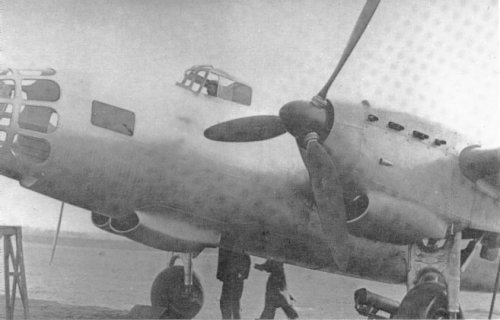 nc150_3.jpg48.6 KB · Views: 186
nc150_3.jpg48.6 KB · Views: 186 -
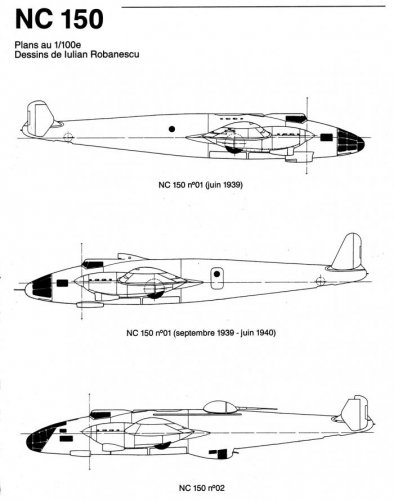 NC.150 No.1 and No.2 side view.jpg53.8 KB · Views: 196
NC.150 No.1 and No.2 side view.jpg53.8 KB · Views: 196 -
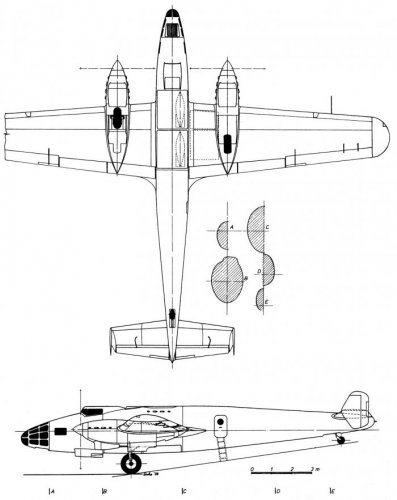 NC.150 plan and side view.jpg57 KB · Views: 184
NC.150 plan and side view.jpg57 KB · Views: 184 -
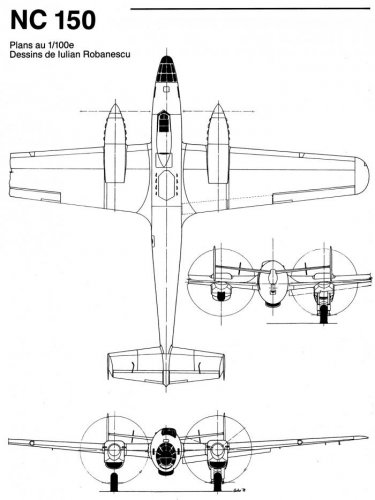 NC.150 plan and front view.jpg64.1 KB · Views: 168
NC.150 plan and front view.jpg64.1 KB · Views: 168 -
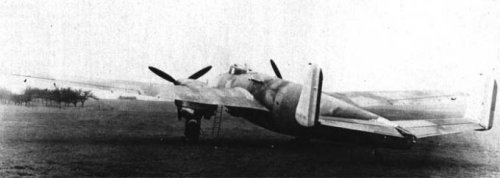 CENTRE_NC-150-08-680x241.jpg20.7 KB · Views: 145
CENTRE_NC-150-08-680x241.jpg20.7 KB · Views: 145 -
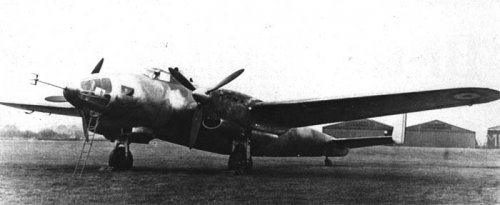 nc150-1.jpg35.7 KB · Views: 139
nc150-1.jpg35.7 KB · Views: 139 -
 enigm_20.jpg53.1 KB · Views: 178
enigm_20.jpg53.1 KB · Views: 178 -
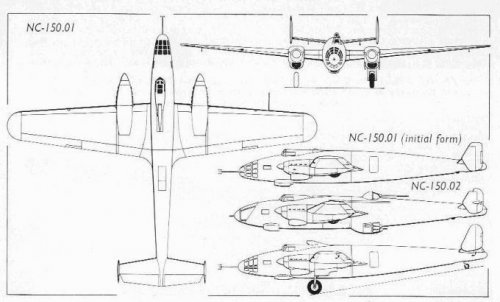 CENTRE_NC-150-12-680x410.jpg40.4 KB · Views: 231
CENTRE_NC-150-12-680x410.jpg40.4 KB · Views: 231
blackkite
Don't laugh, don't cry, don't even curse, but.....
- Joined
- 31 May 2007
- Messages
- 8,819
- Reaction score
- 7,716
Hi! NC.510 and NC.530.
http://www.airwar.ru/image/idop/spyww2/nc510/
https://en.wikipedia.org/wiki/SNCAC_NC.510
"The SNCAC NC.510 was a twin-engine French reconnaissance, army co-operation or advanced training aircraft, built in the late 1930s. Three were built and refined but production orders were not forthcoming."
"NC.510 : 9-cylinder, 770 hp (574 kW) Gnome-Rhône 9Kfr radial engines. One only.
NC.510M : 14-cylinder 680 hp (507 kW) Gnome-Rhône 14M radial engines. NC.510 modified, first flew 14 January 1939.
NC.530 : Modified fuselage without ventral pod; engines as NC.510M. First flew 28 June 1939. Two built."
Also here.
https://www.secretprojects.co.uk/forum/index.php?topic=12658.0
http://www.airwar.ru/image/idop/spyww2/nc510/
https://en.wikipedia.org/wiki/SNCAC_NC.510
"The SNCAC NC.510 was a twin-engine French reconnaissance, army co-operation or advanced training aircraft, built in the late 1930s. Three were built and refined but production orders were not forthcoming."
"NC.510 : 9-cylinder, 770 hp (574 kW) Gnome-Rhône 9Kfr radial engines. One only.
NC.510M : 14-cylinder 680 hp (507 kW) Gnome-Rhône 14M radial engines. NC.510 modified, first flew 14 January 1939.
NC.530 : Modified fuselage without ventral pod; engines as NC.510M. First flew 28 June 1939. Two built."
Also here.
https://www.secretprojects.co.uk/forum/index.php?topic=12658.0
Attachments
-
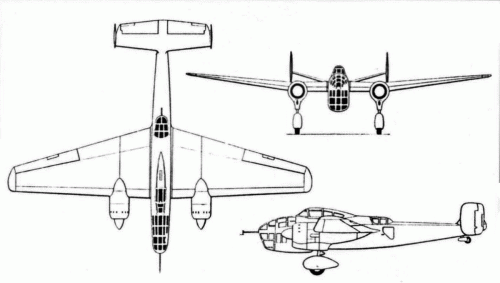 nc530-1.gif167 KB · Views: 192
nc530-1.gif167 KB · Views: 192 -
 nc530.jpg53.7 KB · Views: 138
nc530.jpg53.7 KB · Views: 138 -
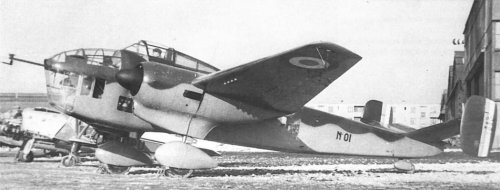 nc530 picture1.jpg65.5 KB · Views: 147
nc530 picture1.jpg65.5 KB · Views: 147 -
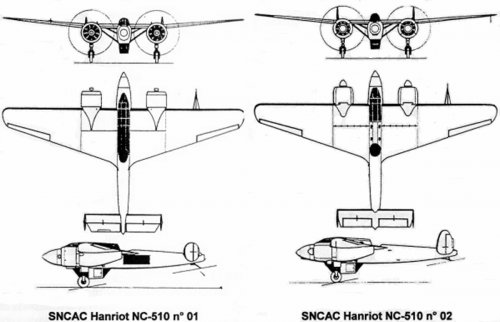 r_nc510.JPG97.2 KB · Views: 156
r_nc510.JPG97.2 KB · Views: 156 -
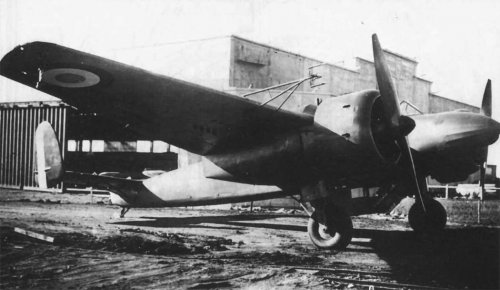 nc510-5.jpg76.3 KB · Views: 214
nc510-5.jpg76.3 KB · Views: 214 -
 nc510-10.jpg42.9 KB · Views: 203
nc510-10.jpg42.9 KB · Views: 203 -
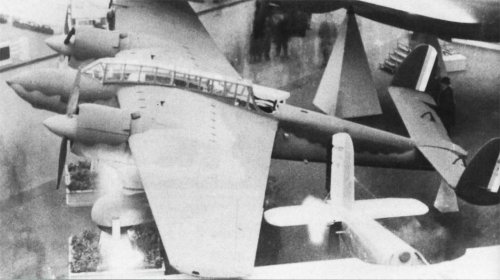 nc510-11.jpg80.3 KB · Views: 209
nc510-11.jpg80.3 KB · Views: 209 -
 nc510-10.jpg42.9 KB · Views: 219
nc510-10.jpg42.9 KB · Views: 219 -
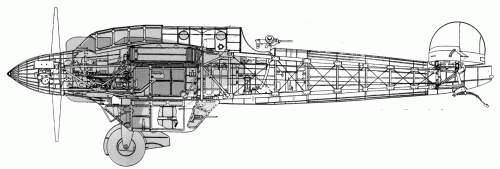 nc510-1.gif1.2 MB · Views: 267
nc510-1.gif1.2 MB · Views: 267
blackkite
Don't laugh, don't cry, don't even curse, but.....
- Joined
- 31 May 2007
- Messages
- 8,819
- Reaction score
- 7,716
SNCAC NC.4-10(Farman F410).
https://en.wikipedia.org/wiki/SNCAC_NC.4-10
The SNCAC NC.4-10 was a twin-engine floatplane torpedo bomber built in France in the late 1930s. It was one of several prototypes competing for an Admiralty specification but no contracts were awarded after the military lost interest in the type.
https://forum.warthunder.com/index.php?/topic/388652-sncac-farman-nc410/
https://en.wikipedia.org/wiki/SNCAC_NC.4-10
The SNCAC NC.4-10 was a twin-engine floatplane torpedo bomber built in France in the late 1930s. It was one of several prototypes competing for an Admiralty specification but no contracts were awarded after the military lost interest in the type.
https://forum.warthunder.com/index.php?/topic/388652-sncac-farman-nc410/
Attachments
- Joined
- 26 May 2006
- Messages
- 34,895
- Reaction score
- 15,759
it looks a lot more like a Couzinet than a Farman. So much that it makes on wonder whether the journalist got it right.
My dear Dan,
Rene Couzinet began to design airplanes in 1925,and this strange Project was from 1922,and may it was the Farman Type-100 ?.
Attachments
Last edited:
- Joined
- 6 November 2010
- Messages
- 5,262
- Reaction score
- 5,514
Hasan, it would be helpful if you could give the site where you found this image. I found the image here:
 www.luftfahrt-bibliothek.de
I agree with Dan, this looks like a Couzinet design, not Farman.
www.luftfahrt-bibliothek.de
I agree with Dan, this looks like a Couzinet design, not Farman.
<edit>The text with the image:
</edit>
Zeitschrift Flugsport von Oskar Ursinus - Kompletter Jahrgang 1922 als digitaler Volltext
Zeitschrift Flugsport von Oskar Ursinus - Chronik der Luftfahrt 1922.
<edit>The text with the image:
I would agree the design is from 1922 or slightly earlier. The text might not comment on the image at all, as the image could be from issue #22 or #23. The Farman text appears to describe single-engined aircraft, the Breguet text describes a biplane.No. 21-ai
Fak'man, [Farman?]
von dem ein normales Verkehrsflugzeug auf dem Stand der Compagnie Aérienne Française, die Limousine F 70 sowie verschiedene .Kriegsflugzeuge auf dem Stand der Aéronautique militaire zu sehen sind, zeigt auf seinem Stand ein Tagesbombenflugzeug mit hohem, schmalem Rumpf sowie ein einmotoriges Verkehrsflugzeug mit 600 PS Farman-Motor mit vierflügeliger Schraube für acht Passagiere. Die Zelle ist die normale Goliathzelle, Geschwindigkeit ISO km. Das einzige was interessiert auf diesem Stand, ist der Toureneindecker mit dicken freitragenden Flügeln, vergl. die Abb. ein Zweisitzer mit limousinenartigem Aufbau. S. 354.) Der Hispano 180 PS Motor mit dem vorn liegenden Kühler zeigt eine automobilähnliche Motorhaube. Spannweite 10,8 m, Länge 9,6 m, Höhe 2,3 m, Flügelinhalt 28 m-, Leergewicht 680 kg, belastet 1120 kg. Belastung pro m- 40 kg, pro PS 6.25 kg. Dor
Breguet
Stand nimmt ein ganzes Viereck ein. Außer dem bekannten Levia-than XX, 1000 PS, 6400 kg Gesamtgewicht, davon 2000 kg Bomben, inseressiert die Type XXII (auch Bomber), jedoch frisiert als Verkehrsflugzeug mit Kabine. Die Motoren beim Typ XXII 900 BS Doppelmotoren Breguet sind zu beiden Seiten des Rumpfes zwischen den Flügeln angeordnet. Die Zelle besteht aus einem Mittelstück und zwei Ansatzstücken. Die drei Flügelholme sind aus Duraluininrohren, Rippen aus Metall. Flügelbespannung 0,5 mm Duralumin, die Form der Streben zeigt die Abbildung auf S. 353. Rumpf rechteckig in Duraluminkonstruktion, Holme Duraluminrohre. Vorn im Rumpf der Raum für den Wegführer, rechts dahinter etwas erhöht der Flugzeugführersitz, dahinter anschließend der Passagiorraum 7 m Länge, 2 m Höhe und 2 m Breite. Die Benzinbehälter liegeD in den seitlichen Motorengondeln aus Aluminium hinter dem Motor. Fassungsvermögen 500 1 Benzin. Der vordere Teil der horizontalen Dämpfungsfläche ist während
des Fluges verstellbar. Von der vertikalen Dämpfungsfläche ist die mittlere auch während des Fluges verstellbar. Spannweite Oberflügel 26,53 m, Unterflügel
23.6 m, Länge 14m, Höhe 4,1 m, Flügelabstand 3,1 m, Flügelinhalt 140 m!, Spurweite des Fahrgestells 4 m, Leergewicht 3150 kg, Betriebsstoff 750kg, Nutzlast 2500 kg, belastet 6400 kg, Belastung pro m*
45.7 kg, Geschwindigkeit in Bodennähe 180 km, in 2000 m 170 km, Landegeschwindigkeit 90 km, 2000 m
„ , ,., .,,, in 20 Min.. Gipfel-
nd Kord I r.msporM.la^.eu». hüho ^ ^
CI^MffWltewitat — „ i«). 2D0m,Auslauf200m.
<image removed>
[issues Nr. 22-ai and Nr. 23-ai not found in original document]
Nr. 24-ai
„ F LUGSP OR T"
</edit>
Last edited:
- Joined
- 26 May 2006
- Messages
- 34,895
- Reaction score
- 15,759
No my dear Arjen,
Couzinet had no aircarft in 1922,and from translation;
A normal commercial aircraft at the Compagnie Aérienne Française stand, the F 70 limousine and various war planes at the Aéronautique militaire stand show a day bomber with a high, narrow fuselage and a single-engine commercial aircraft with a 600 HP Farman
Couzinet had no aircarft in 1922,and from translation;
A normal commercial aircraft at the Compagnie Aérienne Française stand, the F 70 limousine and various war planes at the Aéronautique militaire stand show a day bomber with a high, narrow fuselage and a single-engine commercial aircraft with a 600 HP Farman
Last edited:
- Joined
- 3 September 2006
- Messages
- 1,475
- Reaction score
- 1,471
It is true that the 1st known Couzinet aircraft is from 1928. However, according to the French wikipedia, he had filed "several aviation-related patents before 1924".Couzinet had no aircarft in 1922
Could this drawing come from one of those patents?
We don't know for sure. As a personal opinion, to me it is much more likely that this drawing shows an early, not-yet-mature, concept of his future Arc-en-ciel formula, rather than a Farman or Breguet which would be very out-of-character for those firms.
- Joined
- 26 May 2006
- Messages
- 34,895
- Reaction score
- 15,759
My dear Dan,
also the drawing looks like de Monge design,and that's not a measure,for Couzinet,he began to make his first early patent in 1924 as TU magazine ?,the text is clear "a day bomber with a high, narrow fuselage ".
also the drawing looks like de Monge design,and that's not a measure,for Couzinet,he began to make his first early patent in 1924 as TU magazine ?,the text is clear "a day bomber with a high, narrow fuselage ".
Last edited:
blackkite
Don't laugh, don't cry, don't even curse, but.....
- Joined
- 31 May 2007
- Messages
- 8,819
- Reaction score
- 7,716
F.220.01 : Prototype with Hispano-Suiza 12Lbr engines.
F.221.01 : Revised version with enclosed gunner’s position, powered by Gnome-Rhone 14Kdrs engines.
F222.1 : Revised version with retractable undercarriage and turrets, powered by Gnome-Rhone 14Kdrs engines.
F.222.2 : F.222.1 with redesigned nose, powered by Gnome-Rhone 14N-11 engines.
NC.223,1 : Mailplane prototype.
NC.223.4 : Mailplane.
Various wing, various engine and various radiator. Especially radiator design is unique.
Powered by air cooling engines using such a configulation is surprising for me. Aft engine cooling is no problem?

F.220.01

F.221.01

F.221.01 : Revised version with enclosed gunner’s position, powered by Gnome-Rhone 14Kdrs engines.
F222.1 : Revised version with retractable undercarriage and turrets, powered by Gnome-Rhone 14Kdrs engines.
F.222.2 : F.222.1 with redesigned nose, powered by Gnome-Rhone 14N-11 engines.
NC.223,1 : Mailplane prototype.
NC.223.4 : Mailplane.
Various wing, various engine and various radiator. Especially radiator design is unique.
Powered by air cooling engines using such a configulation is surprising for me. Aft engine cooling is no problem?
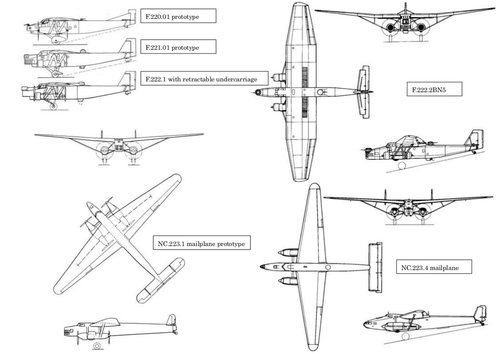
F.220.01
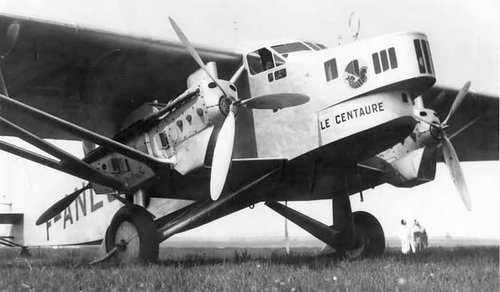
F.221.01
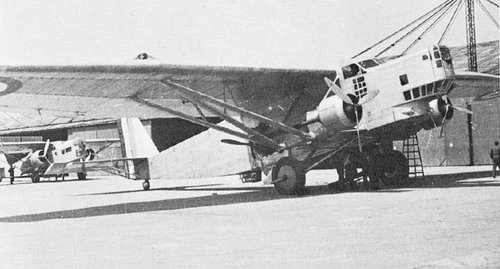
Last edited:
blackkite
Don't laugh, don't cry, don't even curse, but.....
- Joined
- 31 May 2007
- Messages
- 8,819
- Reaction score
- 7,716
Hi! NC223.1 mailplane prototype.
F.223.1 No. 1, in the form of a long-range postal aircraft. This machine, named F-APUZ, made its maiden flight to Tousle-les-Noble in June 1937. The aircraft was powered by four 12-cylinder Liquid Cooling Engines of the Hispano-Suisa 12 Xirsl with a capacity of 720 hp. On October 17, it set a world record by flying 1,000 km with a load of 10 tons at an average speed of 263 km/h. NC.223.1, which was named "Chef-Pilot Lauren Guerro" with a range of 8,000 km. Air France subsequently used the aircraft on a line across the South Atlantic.


F.223.1 No. 1, in the form of a long-range postal aircraft. This machine, named F-APUZ, made its maiden flight to Tousle-les-Noble in June 1937. The aircraft was powered by four 12-cylinder Liquid Cooling Engines of the Hispano-Suisa 12 Xirsl with a capacity of 720 hp. On October 17, it set a world record by flying 1,000 km with a load of 10 tons at an average speed of 263 km/h. NC.223.1, which was named "Chef-Pilot Lauren Guerro" with a range of 8,000 km. Air France subsequently used the aircraft on a line across the South Atlantic.
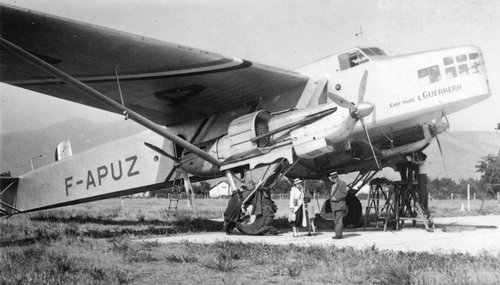
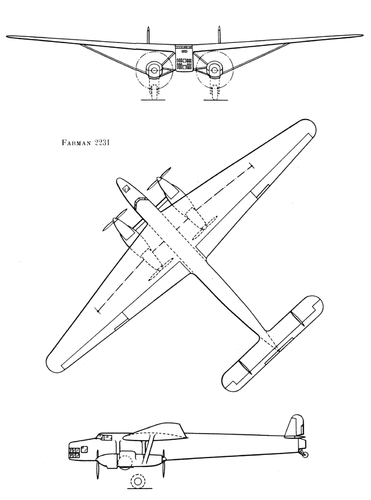
Last edited:
blackkite
Don't laugh, don't cry, don't even curse, but.....
- Joined
- 31 May 2007
- Messages
- 8,819
- Reaction score
- 7,716
The second aircraft built, the NC.223.1(NC.223.01?) was actually the first prototype bomber. It looked like a postal plane. The only significant difference can be considered a motorcycle installation. On the second NC.233.1 were four 14-cylinder two-row star-shaped engines of the Hispano-Suisa 14AA, which developed 1000 hp at an altitude of 4000 m. This aircraft took off in Toussa-le-Noble on January 18, 1938. Sema. However, the low reliability of the 14AA engines caused constant interruptions in the flight program. On June 18, the prototype aircraft was returned to SNCAC to install 12-cylinder liquid cooling engines of the Spanish-Suisa 12 Y29, which developed a capacity of 910 hp on takeoff and 920 hp at an altitude of 3345 m simultaneously designed modification NC.223.2 with star-shaped Motors. This option has gradually come to a standstill.



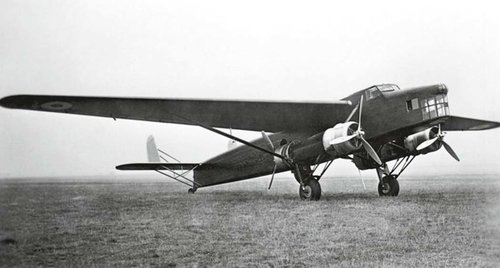
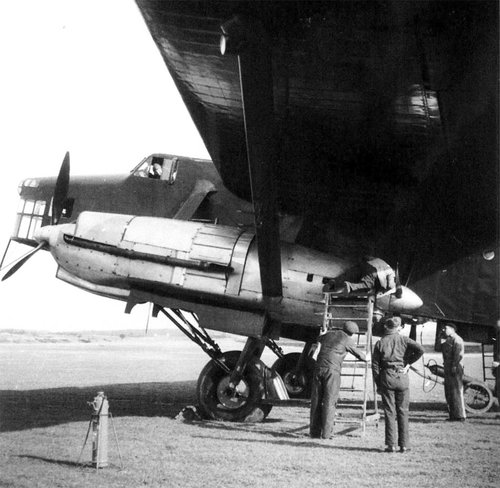
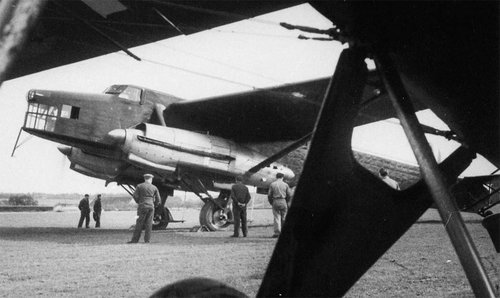
Last edited:
blackkite
Don't laugh, don't cry, don't even curse, but.....
- Joined
- 31 May 2007
- Messages
- 8,819
- Reaction score
- 7,716
Hi! NC.223-4.
The Farman/SNCAC (Société Nationale de Constructions Aéronautiques du Centre) NC 223.4 was initially the mail plane variant of the Farman 220 series of large, four-engined aircraft that served France between the world wars as everything from airliners to cargo transports to maritime patrol aircraft and finally, as bombers. The Farman NC.223 was the most advanced version of this family of aircraft to see active service during the Second World War, and earned a place in aviation history as the first Allied aircraft to bomb Berlin during World War II.
The F.223 (redesignated NC.223 when Farman was absorbed into SNCAC) incorporated significant changes compared to its predecessors, including a twin tail and a considerably refined fuselage. The first prototype was ordered as a long range mail plane and in October 1937 established a record, flying 621 miles with a 22,046 lb. payload. The French Air Ministry ordered a production run of 8 of the NC 223.3 variant which began during 1939.
Only three of the NC 223.4 variant were built, and were initially designated as mail planes and sold to Air France. At the request of Air France inspector general Paul Codos, the NC 223.4 coded F-AJQM took the name “Camille Flammarion.” The second, coded F-ARIN took the name “Jules Verne,” while the third and last, coded F-AROA, was called “Le Verrier.” Commissioned in 1937 by Air France, the aircraft had been designated NC 223.4 since after the French government nationalized its arms industry, including the aviation concerns, in 1936, the Farman Company was a fraction of the aircraft production of SNCAC (National Aerial Vehicle Consortium).
By May 1940, with the changes wrought by another World War, Air France no longer had need of long distance air transports. The trio of 223.4’s, deemed to slow for use by the French Air Force, were transferred to the Aéronavale, forming Escadrille B5, based at Orly. Curiously, the Air France deal selling the planes to the French Navy included their civilian crews. The three aircraft were to be used as long range reconnaissance and bomber aircraft, although only one, the Jules Verne, would be converted to carry bombs. But the Jules Verne was first pressed into service for maritime patrol, deployed to protect a convoy leaving Bordeaux for Casablanca on April 4, 1940. Soon afterwards it was modified for use as a bomber. The modifications included a bombardier’s station in the nose of the aircraft, additional fuel tanks, a 7.5mm machine gun on the right side of the aircraft, and an application of matt black camouflage on the underside of the fuselage.
The 223.4 ‘s were stationed at the Lenvéoc-Poulmic airfield, which became their operational base during the German offensive starting on May 10, 1940. The first mission took place on the night of May 13-14, in which the “Jules Verne” bombed the railway junctions of Aachen and Maastricht. Other missions followed to bombard Middelburg and other cities. On the night of June 7-8, 1940, the Jules Verne became the first Allied aircraft to bomb Berlin, dropping 2 tons of bombs on the city. This operation was more in the nature of psychological warfare than an effort to achieve any meaningful military result (as was the subsequent American raid on Tokyo in April 1942 in the wake of the Japan’s attack on Pearl Harbor), for although it was repeated three days later (a raid attacking the Heinkel factories at Rostock), these attacks did not alter the outcome of the Battle of France or the Allied collapse at Dunkirk which concluded on June 4, 1940.
After Italy declared war on France on June 10, 1940, the Jules Verne three nights later bombed the petrol refineries of Porto Maghera, Italy and released leaflets over Rome. After one final bombing raid on Livorno, Italy, it was called upon for a final leaflet drop. Following these raids, the Jules Verne and its sister aircraft were transferred to North Africa. All three aircraft were subsequently relegated to transport roles, seeing service with both the Vichy regime and the Free French. Ultimately the Jules Verne was returned to civilian service and flown back to Marignane, France where it sat out the war until destroyed by fire in November 1942.


The Farman/SNCAC (Société Nationale de Constructions Aéronautiques du Centre) NC 223.4 was initially the mail plane variant of the Farman 220 series of large, four-engined aircraft that served France between the world wars as everything from airliners to cargo transports to maritime patrol aircraft and finally, as bombers. The Farman NC.223 was the most advanced version of this family of aircraft to see active service during the Second World War, and earned a place in aviation history as the first Allied aircraft to bomb Berlin during World War II.
The F.223 (redesignated NC.223 when Farman was absorbed into SNCAC) incorporated significant changes compared to its predecessors, including a twin tail and a considerably refined fuselage. The first prototype was ordered as a long range mail plane and in October 1937 established a record, flying 621 miles with a 22,046 lb. payload. The French Air Ministry ordered a production run of 8 of the NC 223.3 variant which began during 1939.
Only three of the NC 223.4 variant were built, and were initially designated as mail planes and sold to Air France. At the request of Air France inspector general Paul Codos, the NC 223.4 coded F-AJQM took the name “Camille Flammarion.” The second, coded F-ARIN took the name “Jules Verne,” while the third and last, coded F-AROA, was called “Le Verrier.” Commissioned in 1937 by Air France, the aircraft had been designated NC 223.4 since after the French government nationalized its arms industry, including the aviation concerns, in 1936, the Farman Company was a fraction of the aircraft production of SNCAC (National Aerial Vehicle Consortium).
By May 1940, with the changes wrought by another World War, Air France no longer had need of long distance air transports. The trio of 223.4’s, deemed to slow for use by the French Air Force, were transferred to the Aéronavale, forming Escadrille B5, based at Orly. Curiously, the Air France deal selling the planes to the French Navy included their civilian crews. The three aircraft were to be used as long range reconnaissance and bomber aircraft, although only one, the Jules Verne, would be converted to carry bombs. But the Jules Verne was first pressed into service for maritime patrol, deployed to protect a convoy leaving Bordeaux for Casablanca on April 4, 1940. Soon afterwards it was modified for use as a bomber. The modifications included a bombardier’s station in the nose of the aircraft, additional fuel tanks, a 7.5mm machine gun on the right side of the aircraft, and an application of matt black camouflage on the underside of the fuselage.
The 223.4 ‘s were stationed at the Lenvéoc-Poulmic airfield, which became their operational base during the German offensive starting on May 10, 1940. The first mission took place on the night of May 13-14, in which the “Jules Verne” bombed the railway junctions of Aachen and Maastricht. Other missions followed to bombard Middelburg and other cities. On the night of June 7-8, 1940, the Jules Verne became the first Allied aircraft to bomb Berlin, dropping 2 tons of bombs on the city. This operation was more in the nature of psychological warfare than an effort to achieve any meaningful military result (as was the subsequent American raid on Tokyo in April 1942 in the wake of the Japan’s attack on Pearl Harbor), for although it was repeated three days later (a raid attacking the Heinkel factories at Rostock), these attacks did not alter the outcome of the Battle of France or the Allied collapse at Dunkirk which concluded on June 4, 1940.
After Italy declared war on France on June 10, 1940, the Jules Verne three nights later bombed the petrol refineries of Porto Maghera, Italy and released leaflets over Rome. After one final bombing raid on Livorno, Italy, it was called upon for a final leaflet drop. Following these raids, the Jules Verne and its sister aircraft were transferred to North Africa. All three aircraft were subsequently relegated to transport roles, seeing service with both the Vichy regime and the Free French. Ultimately the Jules Verne was returned to civilian service and flown back to Marignane, France where it sat out the war until destroyed by fire in November 1942.
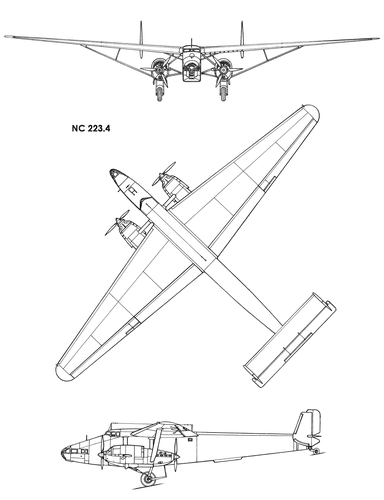
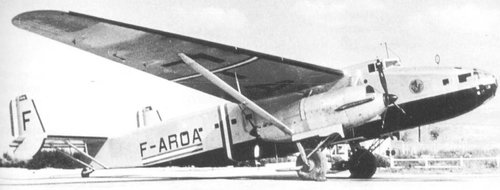
Last edited:
Deltafan
ACCESS: Top Secret
- Joined
- 8 May 2006
- Messages
- 1,697
- Reaction score
- 2,317
Yes, the Farman 223.4 Jules Vernes was the only strategic bomber of France in 1939-40 (and used as such)...All three aircraft were subsequently relegated to transport roles, seeing service with both the Vichy regime and the Free French. Ultimately the Jules Verne was returned to civilian service and flown back to Marignane, France where it sat out the war until destroyed by fire in November 1942.
-the Le Verrier was shot down on 27.11.1940 flying into an aerial battle between Italian and British air forces (cape Spartivento). It is supposed that it was a mistake of an Italian fighter pilot.
-the Camille Flammarion crashed on landing on 19.01.1941 in Beyrouth (broken rear Wheel). It has not been repaired.
-for the end of the Jules Vernes, there have been some legends. The only sure thing is that it was burned by an unknown French in a hangar before the arrival of the German occupation troops invading the southern zone of France in November 1942 (following the Allied landings in French North Africa).
Some said that the plane had a bad landing (broken rear wheel) and was not reparaid after this. It's why it was in the hangar in November 1942. Other said that it was in the hangar because it was forbidden to fly by the German Armistice Commission after June 40 (as a symbol of the bombing of Berlin). It was said too that the man who burned the plane was a resistant or that the commander of the plane during the bombings of 1940 (Henri Daillière) asked someone to burn the plane if it should fall into German hands…
Last edited:
blackkite
Don't laugh, don't cry, don't even curse, but.....
- Joined
- 31 May 2007
- Messages
- 8,819
- Reaction score
- 7,716
On September 2, 1927, an attempt was made to fly on the Route Paris-New York, the shortest version of 5460km was chosen. On this occasion, the car was marked with large inscriptions "New-York," "Paris," "Farman." Weighing an empty 4400kg aircraft taking off weighing 11,500kg with 6,800kg (or 9,700 litres) of fuel, oil and water (another 185kg) on board after two hours of flight lands back at Le Bourget airfield. It was officially announced that the flight was prevented by weather conditions, but the main reasons were fuel overruns and long-term instability of the aircraft. There were no other attempts to fly - Farman was treated for bad weather conditions for the entire 27th year, and in 1928 the car was converted into a passenger car. Instead of fuel tanks in the fuselage installed 17 passenger seats and made additional portholes.
The fate of the first F.180 was not very rich. The vehicle received a flight certificate No.1788 and registration F-AIMX, nominally since February 1931 is listed in the SGTA (Soci't' g'n'rale des transports a'riens - the airline of the Farman brothers). But no flight with passengers the plane did not make, for a long time dusted in the hangar and, having flown only 87 hours was written off in 1934.
Despite the dubious success of the 180th, the French decided to develop the design further and build a replacement for Goliath on the basis of the first aircraft. The aircraft was designated Farman180T, the name Oiseau-Bleu belonged only to the first copy and its application to all Farman 180 is incorrect. For him, the fuselage was completely redesigned, it was lengthened by 1.3 meters and its section became in terms of elliptical rather than rectangular.
The Farman 180T was presented as a comfortable and safe aircraft for long-distance flights, including in difficult weather conditions. Safety was ensured: the location of the engines - when one car failed to maintain course stability, at the weight of 6750kg the car could fly on the same engine; and low load on the wing. Plus the Farman 12 We engine was considered quite reliable.
Comfort. The fuselage, lined with birch plywood, had no internal elements of the structure preventing the comfortable accommodation of passengers. Thanks to the elliptical section, the salon was very spacious - its height was 1.8m, width 2.35m, and length 8m. Passenger seats are arranged three in a row with a passage between them. The following cabin options were provided: 22 seats for a 500km flight, a maximum of 25; 1000km - 17 chairs, laid out in sofas (apparently just with sloping backs), it is possible to place a bar instead of a part of seats; for night flights of 1500 km - 12 sofas. The capacity of the luggage compartment in the front of the cabin is 5m2.
Despite such a number of advantages, only two Farman 180Ts were built - with registration numbers F-AIR and F-AIVR, both in 1928. The first was soon dismantled by getting rid of wings for display at various aviation exhibitions (to save space in the exhibition halls), the second was december 12, 1929 destroyed by a hurricane that swept over Paris. Despite the new fuselage, the plane was still longitudinally unstable. For parry ingestion tried to install additional horizontal planes in the bow of the fuselage, but they did not give the expected effect.
The fate of the first F.180 was not very rich. The vehicle received a flight certificate No.1788 and registration F-AIMX, nominally since February 1931 is listed in the SGTA (Soci't' g'n'rale des transports a'riens - the airline of the Farman brothers). But no flight with passengers the plane did not make, for a long time dusted in the hangar and, having flown only 87 hours was written off in 1934.
Despite the dubious success of the 180th, the French decided to develop the design further and build a replacement for Goliath on the basis of the first aircraft. The aircraft was designated Farman180T, the name Oiseau-Bleu belonged only to the first copy and its application to all Farman 180 is incorrect. For him, the fuselage was completely redesigned, it was lengthened by 1.3 meters and its section became in terms of elliptical rather than rectangular.
The Farman 180T was presented as a comfortable and safe aircraft for long-distance flights, including in difficult weather conditions. Safety was ensured: the location of the engines - when one car failed to maintain course stability, at the weight of 6750kg the car could fly on the same engine; and low load on the wing. Plus the Farman 12 We engine was considered quite reliable.
Comfort. The fuselage, lined with birch plywood, had no internal elements of the structure preventing the comfortable accommodation of passengers. Thanks to the elliptical section, the salon was very spacious - its height was 1.8m, width 2.35m, and length 8m. Passenger seats are arranged three in a row with a passage between them. The following cabin options were provided: 22 seats for a 500km flight, a maximum of 25; 1000km - 17 chairs, laid out in sofas (apparently just with sloping backs), it is possible to place a bar instead of a part of seats; for night flights of 1500 km - 12 sofas. The capacity of the luggage compartment in the front of the cabin is 5m2.
Despite such a number of advantages, only two Farman 180Ts were built - with registration numbers F-AIR and F-AIVR, both in 1928. The first was soon dismantled by getting rid of wings for display at various aviation exhibitions (to save space in the exhibition halls), the second was december 12, 1929 destroyed by a hurricane that swept over Paris. Despite the new fuselage, the plane was still longitudinally unstable. For parry ingestion tried to install additional horizontal planes in the bow of the fuselage, but they did not give the expected effect.
Last edited:
blackkite
Don't laugh, don't cry, don't even curse, but.....
- Joined
- 31 May 2007
- Messages
- 8,819
- Reaction score
- 7,716
blackkite
Don't laugh, don't cry, don't even curse, but.....
- Joined
- 31 May 2007
- Messages
- 8,819
- Reaction score
- 7,716
Hi! Farman F.370 racer.
As a propulsion system, the aircraft was equipped with a twelve-cylinder V-shaped inverted gearbox Farman 12 Brs. The gearbox with intermediate conical gears had a transmission number of 1:2.25, and the centrifugal compressor increased the pressure of the supercharged when flying off the ground by 60%. The engine with a working volume of 7,892 liters and weighing 257 kg at 3200 rpm developed a capacity of 326 hp, and at 4020 rpm developed 438 hp. The cooling of the power plant was mixed: the upper part of the cylinders was cooled by the circulation of water, and their lower parts - the flow of air. Four radiators - for water, air and oil - were located next to the fuselage and on the snouts of the chassis handlebar fairing. Some of them were changed before the races.
Finally, the f 370's stability on the ground was provided by two crutches placed on the wing ends.
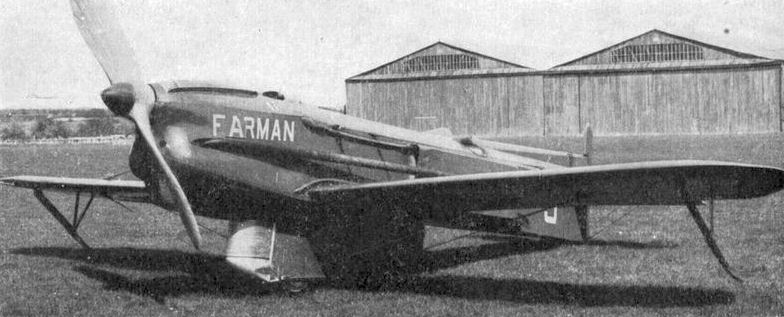
 en.wikipedia.org
en.wikipedia.org
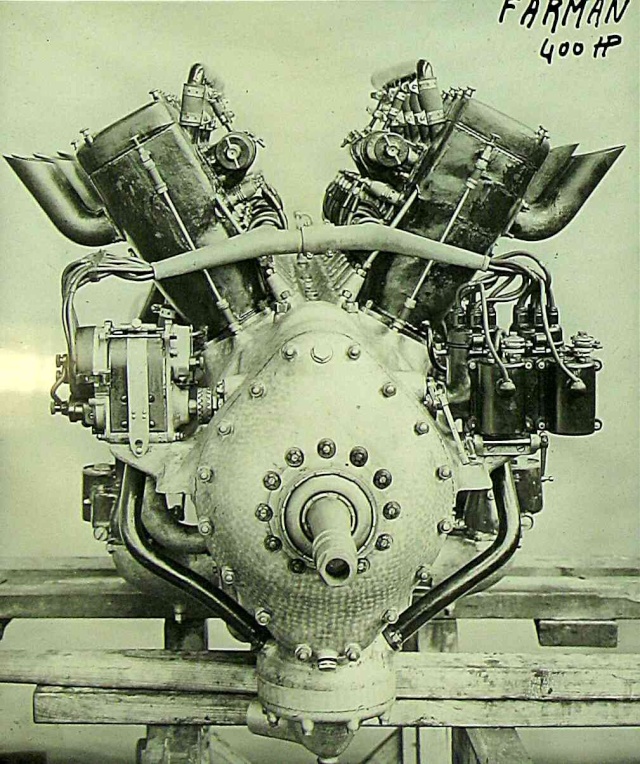
 aviation-ancienne.forumactif.com
aviation-ancienne.forumactif.com




As a propulsion system, the aircraft was equipped with a twelve-cylinder V-shaped inverted gearbox Farman 12 Brs. The gearbox with intermediate conical gears had a transmission number of 1:2.25, and the centrifugal compressor increased the pressure of the supercharged when flying off the ground by 60%. The engine with a working volume of 7,892 liters and weighing 257 kg at 3200 rpm developed a capacity of 326 hp, and at 4020 rpm developed 438 hp. The cooling of the power plant was mixed: the upper part of the cylinders was cooled by the circulation of water, and their lower parts - the flow of air. Four radiators - for water, air and oil - were located next to the fuselage and on the snouts of the chassis handlebar fairing. Some of them were changed before the races.
Finally, the f 370's stability on the ground was provided by two crutches placed on the wing ends.

Farman F.370 - Wikipedia

Moteur !
Tiens, puisque l'on parle ailleurs de documents en ligne, cela me donne l'idée de faire appel à vos connaissances, votre sagacité et votre oeil de lynx... Les A
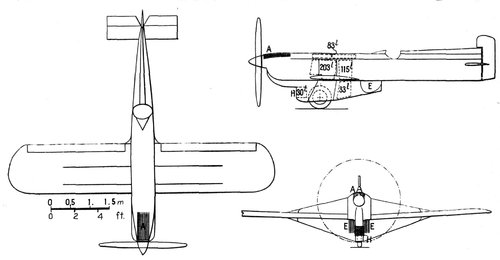
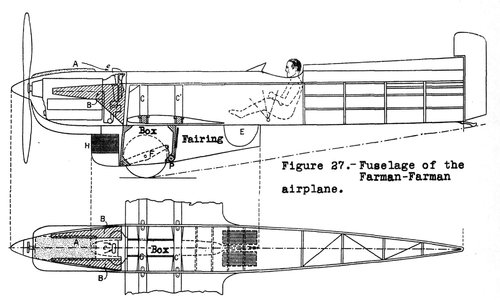
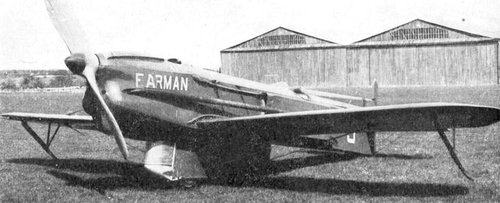
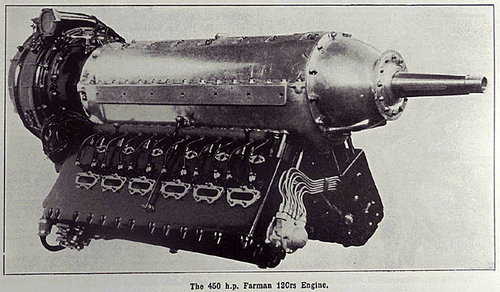
Last edited:
blackkite
Don't laugh, don't cry, don't even curse, but.....
- Joined
- 31 May 2007
- Messages
- 8,819
- Reaction score
- 7,716
Hi! Farman F.380 racer.
The second Farman aircraft, the F 380 with the racing number " 7" - had thinner and slimmer lines than the F 370 and was equipped with a 6.26 m2 free-carrier trapezoidal wing and a small cross-country V. The chassis rack was removed into the space between the two fuselage spars and the pilot's legs. The aircraft, weighing 616 kg, carrying 219 litres of fuel in three fuselage tanks.
The F 380 powerplant was a 135-kilogram four-cylinder Renault "Bengali" sp'cial engine(air cooling engine), which, thanks to the new cams and increased from 5.6 to 8 degrees of compression, was able to increase the power developed at 2500 rpm from 120 hp to 170 hp.
The first flight F 380 took place on Wednesday 10 May 1933 and completed its qualifying tests two days later. On 22 May 1933, a plane operated by Maurice Arnoux set a record in its class by passing a distance of 100 km at a speed of 303.387 km/h.
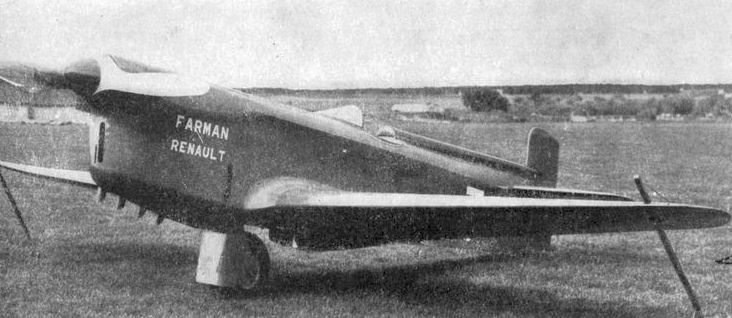
 en.wikipedia.org
en.wikipedia.org
Perhaps this aircraft's engine was this engine or variant.
an air-cooled, normally-aspirated 6.333 liter (386.463 cubic inch) Renault Bengali 4Pei inverted four-cylinder overhead-valve (OHV) engine with a compression ratio of 5.75:1, rated at 130 cheval-vapeur (128.3 horsepower) at 2,300 r.p.m., and 150 cheval-vapeur 148.0 horsepower) for takeoff. This was a direct-drive engine, turning a two-bladed, metal Hélices Ratier variable-pitch propeller. The 4Pdi was 1.28 meters (4 feet, 2.4 inches) long, 0.93 meters (3 feet, 0.6 inches) high and 0.52 meters (1 foot, 8.5 inches) wide. It weighed 135 kilograms (298 pounds).






Proportion of F.370 three side view drawing is strange. (Length : 6.91m, Span : 8.1m.)
The second Farman aircraft, the F 380 with the racing number " 7" - had thinner and slimmer lines than the F 370 and was equipped with a 6.26 m2 free-carrier trapezoidal wing and a small cross-country V. The chassis rack was removed into the space between the two fuselage spars and the pilot's legs. The aircraft, weighing 616 kg, carrying 219 litres of fuel in three fuselage tanks.
The F 380 powerplant was a 135-kilogram four-cylinder Renault "Bengali" sp'cial engine(air cooling engine), which, thanks to the new cams and increased from 5.6 to 8 degrees of compression, was able to increase the power developed at 2500 rpm from 120 hp to 170 hp.
The first flight F 380 took place on Wednesday 10 May 1933 and completed its qualifying tests two days later. On 22 May 1933, a plane operated by Maurice Arnoux set a record in its class by passing a distance of 100 km at a speed of 303.387 km/h.

Farman F.380 - Wikipedia
Perhaps this aircraft's engine was this engine or variant.
an air-cooled, normally-aspirated 6.333 liter (386.463 cubic inch) Renault Bengali 4Pei inverted four-cylinder overhead-valve (OHV) engine with a compression ratio of 5.75:1, rated at 130 cheval-vapeur (128.3 horsepower) at 2,300 r.p.m., and 150 cheval-vapeur 148.0 horsepower) for takeoff. This was a direct-drive engine, turning a two-bladed, metal Hélices Ratier variable-pitch propeller. The 4Pdi was 1.28 meters (4 feet, 2.4 inches) long, 0.93 meters (3 feet, 0.6 inches) high and 0.52 meters (1 foot, 8.5 inches) wide. It weighed 135 kilograms (298 pounds).
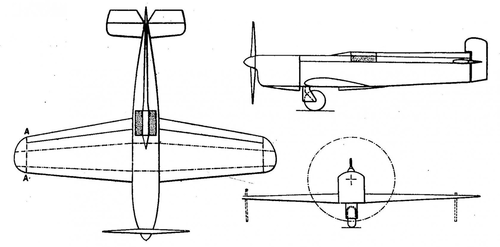
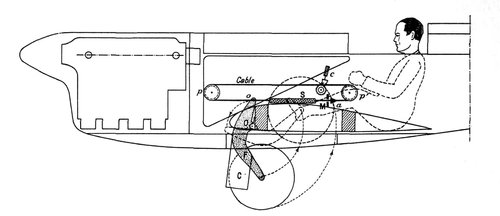
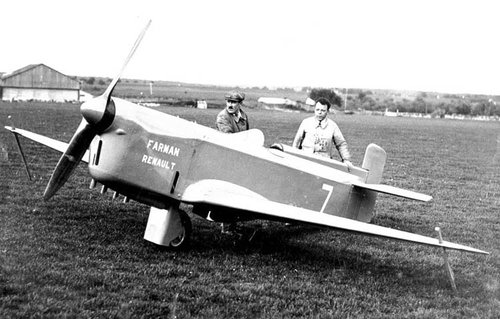
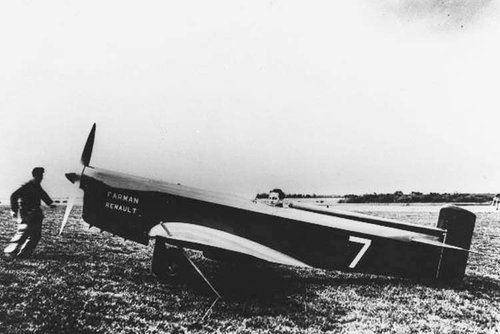
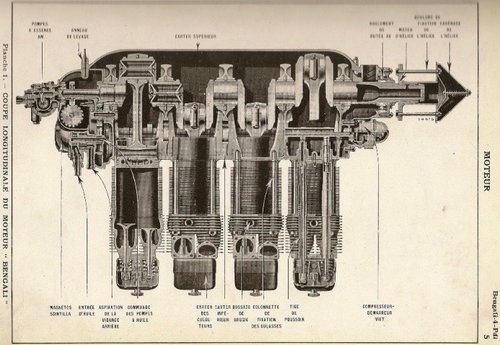

Proportion of F.370 three side view drawing is strange. (Length : 6.91m, Span : 8.1m.)
Last edited:
Similar threads
-
-
-
-
Eastbourne Aviation Company (EAC) Ltd Aircraft
- Started by Cy-27
- Replies: 5
-

